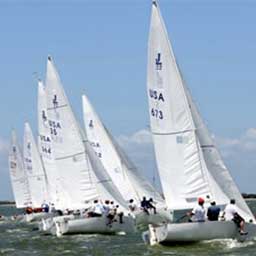The Coastal Navigation graduate will have demonstrated the art of traditional navigation techniques and the ability to integrate electronic navigation tools into the navigation plan.
Recommended Equipment: It is recommended that Coastal Navigation courses and examinations be conducted in a classroom environment, and with adequate equipment inventory and publications to complete all required certification outcomes.
Prerequisite: There is no prerequisite for Coastal Navigation Certification.
Certification Requirements: Coastal Navigation Certification requires the successful completion of the following knowledge and skills, as demonstrated by passing a written examination. These requirements are expected to be performed with confidence and a high degree of accuracy.
Practical Skills
Introduction to Methodology:
- Understand relative bearings and how to convert them for plotting.
- Demonstrate the use of the true and magnetic compass roses and the correct application of variation and deviation.
- Demonstrate how to integrate electronic information with traditional navigation techniques.
- Demonstrate your ability to use a hand bearing compass.
- Demonstrate your ability to select appropriate charts from the chart catalog.
- Demonstrate your ability to update charts using the Local Notice to Mariners.
- Demonstrate your ability to use Chart #1.
- Demonstrate your ability to use a Coast Pilot and Cruising Guide.
- Demonstrate your ability to use a Light List.
- Determine the height of tide at any time or location.
- Determine the direction and strength of the current at any time or location.
- Measure distance on a chart with and without a bar scale.
- Determine the Latitude and Longitude of a position.
- Plot and label, neatly and accurately, the following items: a Dead Reckoning (DR) course; a course corrected for leeway; an after motion triangle to determine a course to steer given the set and drift of a known current; a before motion triangle to determine a course to steer given the set and drift of a known current; a running fix; a fix; a danger bearing; ranges.
Knowledge
- Understand buoyage systems and Aids to Navigation (IALA Systems A & B).
- Understand the organization of a Mercator chart, including: latitude and longitude, chart scales, chart symbols (Chart No.1), title block, warnings, how to determine distance and direction, and the relationship between time/speed/distance.
- Understand the importance of using a navigation (or deck) log when navigating formally.
- Understand the principles of safe inshore pilotage, such as: safe course, clearing (or danger) bearings, back bearings, ranges (or transits), and use of the depthsounder.
- Understand how to interpret and integrate weather information into your navigation.
- Describe the importance of such navigational strategies as: upwind or upcurrent arrival; anticipating leeway; the favored tack; laylines, working the middle; reaching, not running; and the dawn arrival.
- Be familiar with the safety precautions to be taken before entering fog and describe the following fog tactics: buoy hopping, deliberate offset, and visibility circles.
- Understand variation and deviation.
- Understand the meaning of the visual observations of water color.
- Understand the care and use of plotting tools.
- Understand the benefits and limitations of Radar, GPS, AIS, DSC and MMSI.











